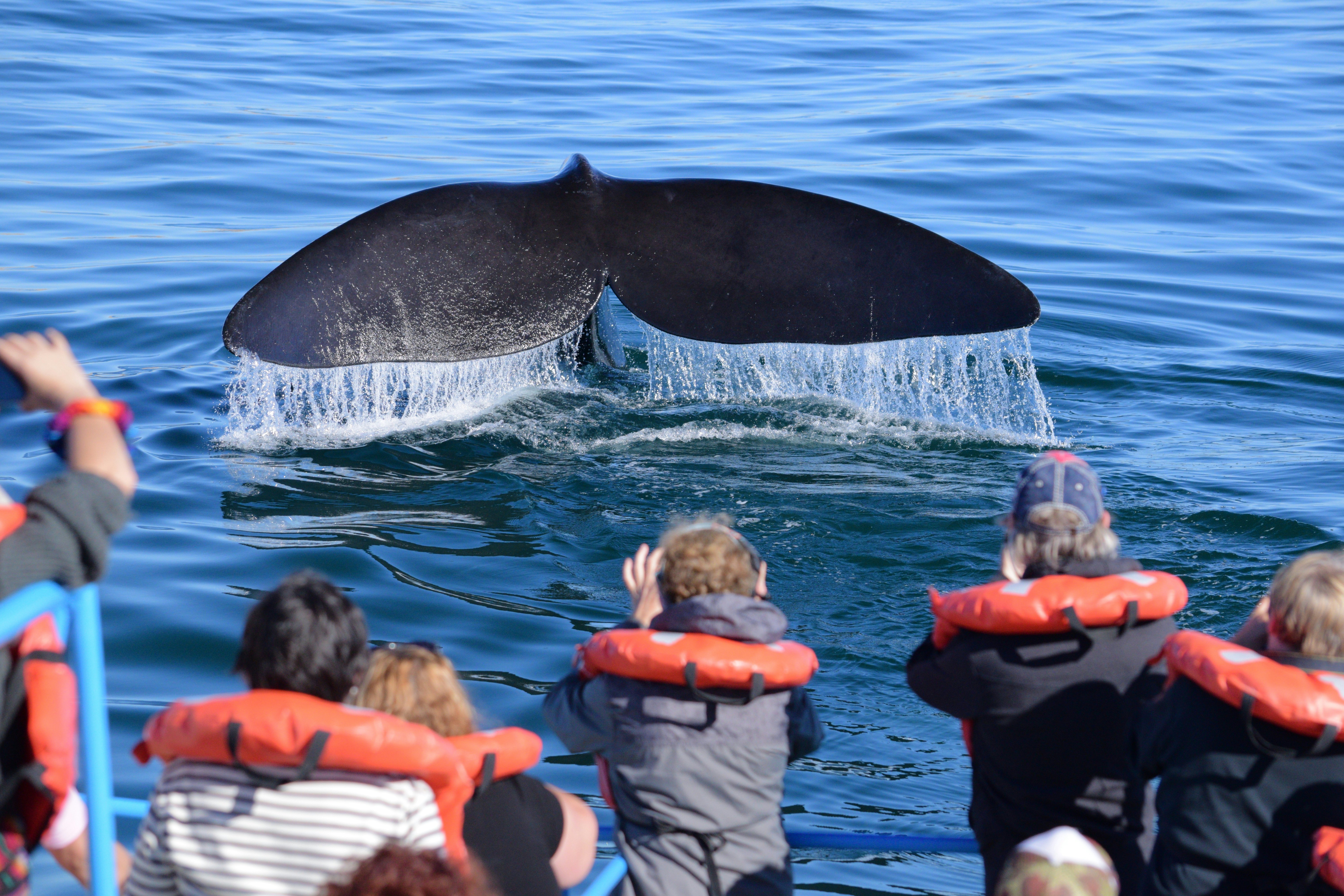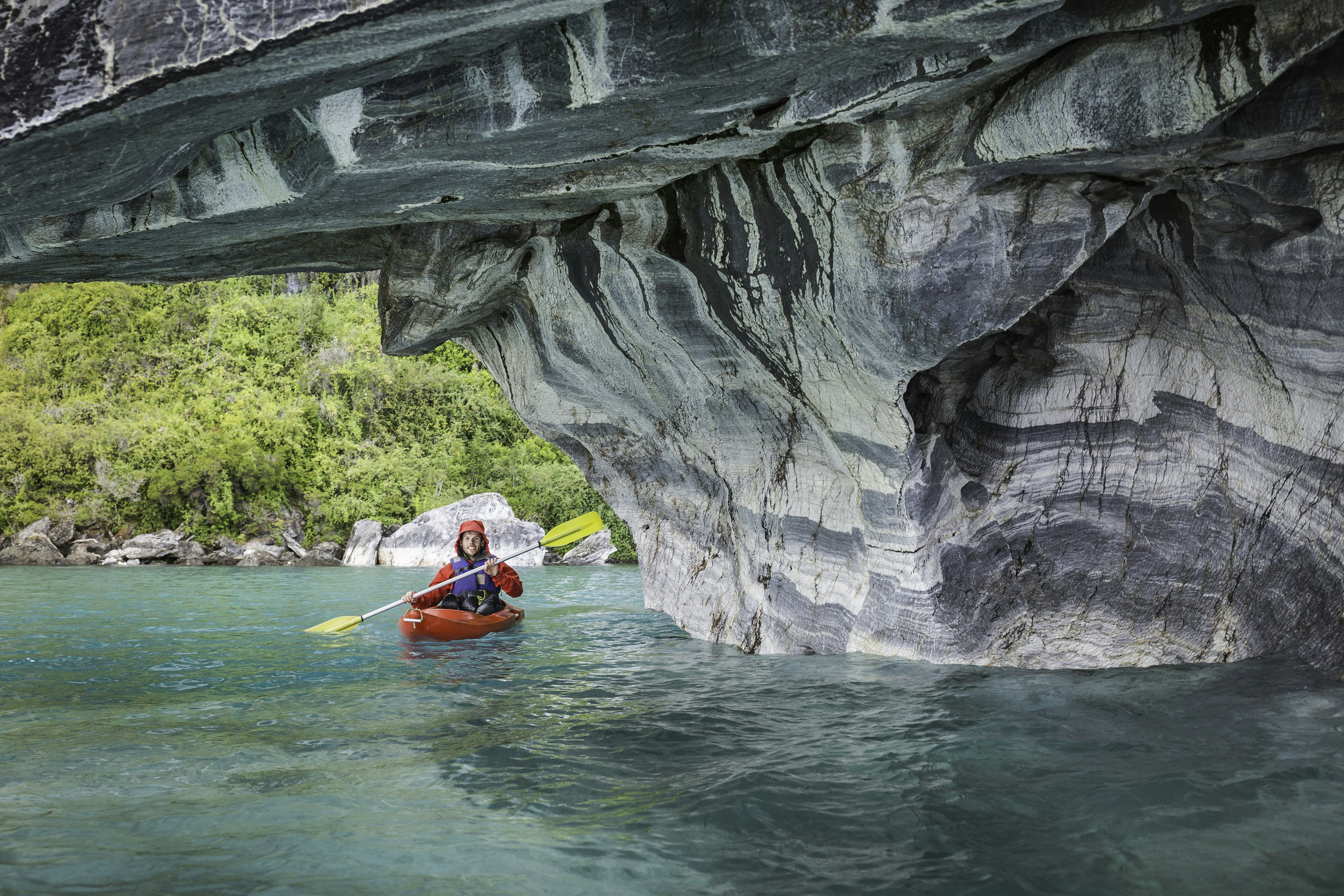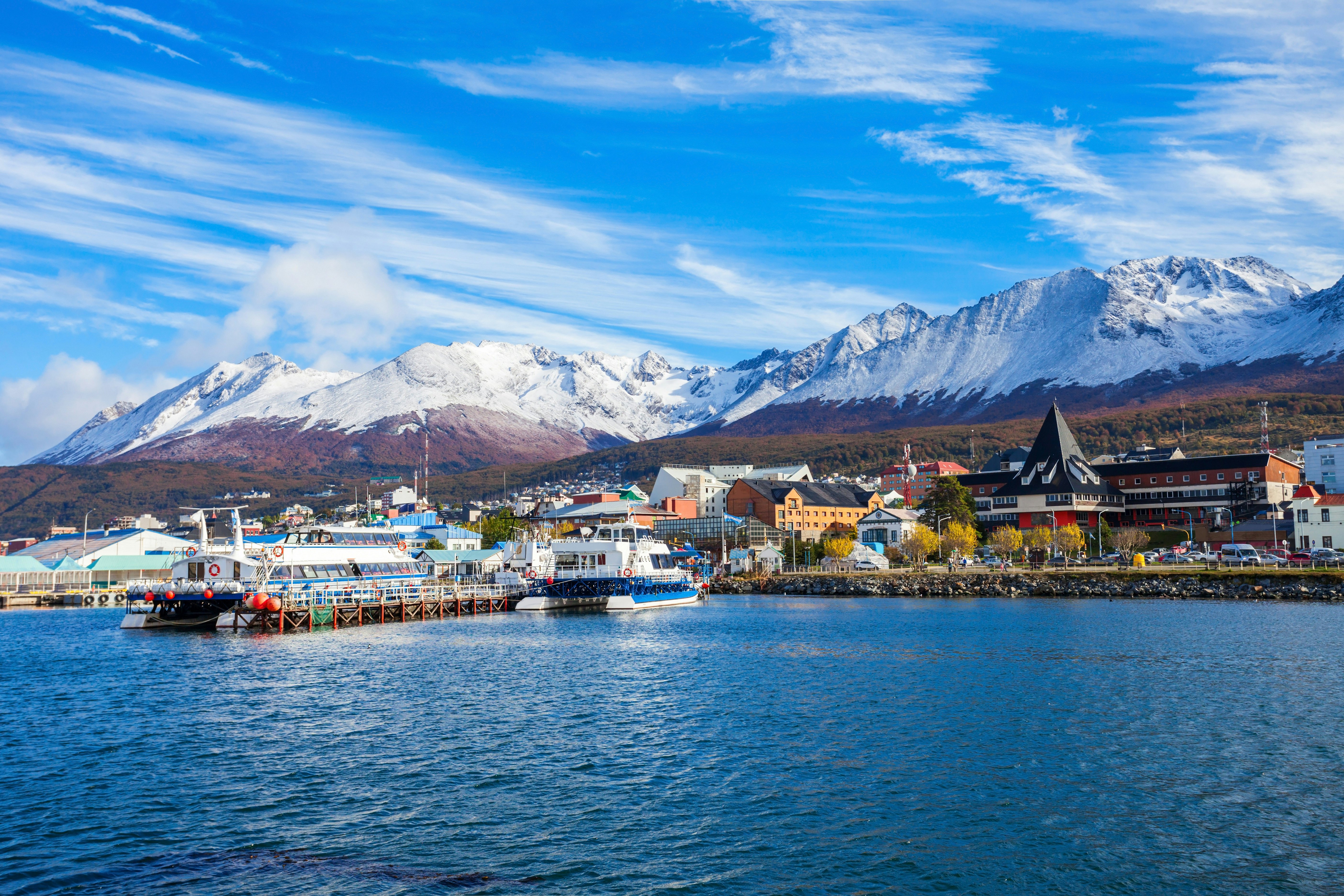
The 30 best countries, cities and regions to visit in 2025

Experience the best of Patagonia with our guide © Dmitry Pichugin / Shutterstock
Patagonia, covering southern Chile and Argentina, offers more than any person can explore in one lifetime.
This vast, sparsely populated and simply astonishing region encompasses virgin forests, snow-tipped Andean crags that serve as a dividing line between the two countries, myriad glacial lakes and immense stretches of pampas (grasslands). Most of Patagonia's biggest attractions are outdoorsy – from epic road trips and multiday treks to glaciers, prehistoric art and penguin colonies – and therefore weather- and season-dependent, so you have to pick the best time to go depending on your interests.
Here are some of Patagonia's unmissable experiences.
Arguably South America's finest national park, Chile's 1810-sq-km (699-sq-mile) Torres del Paine is defined by the characteristic bell-shaped Los Cuernos and the trident peaks of Las Torres themselves. Puma, guanaco and condor sightings are frequent, and well-developed infrastructure lets trekkers experience the mountains, lakes, vast glaciers and dense forest along the park's two long-distance hikes in relative comfort. Whether you're hiking the four-day, 69km-long (43-mile) "W" that takes in the park's main highlights (Glacier Grey, the French Valley and Las Torres), or the 113km (70-mile), 7-to-10-day "Circuit" that encompasses a backcountry half-loop as well as the highlights, you can either camp all the way, hike from refugio to refugio, or a mix of the two.
Planning tip: Note that since hiking permits and accommodations are limited, you have to make arrangements months in advance for the high season (December to February).

An easy day trip from Puerto Madryn in southern Argentina, this UNESCO World Heritage site is renowned for its wildlife, including over 180 species of seabirds. Highlights include taking a boat trip from the village of Puerto Pirámides in search of the endangered ballena franca austral (southern right whale) that comes here to breed from June onward and can be spotted – sometimes even from shore – until mid-December. If you stay land-bound, cross the narrow isthmus and follow the gravel roads along the coastline to spot a massive colony of sea lions from the cliffs at Punta Delgada, elephant seals on the gravel beach at Punta Cantor, and a mix of the two at the remote Punta Norte.
The so-called "Southern Highway" is Chile's most iconic drive, which cuts a 760-mile (1223km) path across the remote Aysén region and its barely touched landscape of dense forest, snow-peaked mountains, volcanoes, isolated pioneer settlements, glacial rivers and misty fjords. Much of the southern section is still not paved; this – along with such other challenges as the lack of phone signal between towns, occasional landslides, inclement weather and waiting for car ferries connecting sections of the road – means you'll need at least two weeks to do the route justice.
Departing from the busy port of Puerto Montt, you traverse the temperate rainforests of Pumalín and Queulat national parks, pass the volcano-wrecked town of Chaitén and the hot springs and fly-fishing lodges around the wood-shingled town of Puyuhuapi. Coyhaique, the region's largest town, is the place to stock up on supplies before pressing on south to Lago General Carrera, where you can hike on glaciers and kayak to the marble caves near Puerto Río Tranquilo. Farther south, the wildlife-rich valleys and mountains of Parque Nacional Patagonia beckon, while Caleta Tortel – a village of cypress boardwalks instead of streets overlooking a pearly-green fjord – makes for a unique stay before you reach Villa O'Higgins, the end of the road. You then have three options: retrace your steps, connect with Argentina's Ruta 40 via Chile Chico, or take a car ferry south to Puerto Natales from nearby Puerto Yungay.
Some 64km (40 miles) south of Puerto Madryn, the 19th-century Welsh-Argentine town of Trelew is renowned for its one family-friendly attraction: an outstanding paleontological museum that showcases Patagonia's most important fossil finds. Apart from over 1700 fossils, the museum displays local dinosaur skeletons, such as the patagosaurus, tehuelchesaurus and Brachytrachelopan mesai, an unusual short-necked sauropod. The star exhibit here? The remains, unearthed as recently as 2012, of Patagotitan mayorum, the largest dinosaur believed ever to have walked the earth.
Planning tip: The museum is currently closed while it completes a program of expansion. Check the website for further details.

If you have time to spare and need to get to Puerto Natales in southern Patagonia from Chile's Lake District, consider taking the four-day Navimag ferry from Puerto Montt. Think of the Navimag as a cruise ship of sorts – albeit a downmarket one, with cows on the car deck and rather basic accommodations that range from thimble-sized private cabins to a backpacker dorm with privacy curtains for bunks. If you're lucky with the weather, you'll enjoy remarkable scenery as you pass through the maze of tiny islands, pristine fjords and glaciers. Marine life abounds, with dolphins, penguins and whales often sighted en route. If you're unlucky, you'll spend much of your time in the communal lounge with your fellow passengers, unable to see much through the fog and swaying because of rough seas. Either way, you'll disembark with an experience to remember.
Every southern summer, the sunny mountain town of Futaleufú in Chile's Aysén region attracts scores of adventurers who come for the watery thrills of its namesake river. The Futaleufú is one of the world's best rivers for white water rafting, with Class VI and V rapids challenging enough for any river junkie. But you don't have to be an expert to get drenched head to foot with the spray that specks the turquoise waters with white: professional outfits such as Bochinche Expediciones and Patagonia Elements organize safety-conscious rafting and cata-rafting trips that make the roller-coaster-like river accessible even to novices.
Planning tip: Rafting takes place between December and March.
Some 110km (68 miles) south of Trelew, on the gravel RP 1, Punta Tombo is continental South America's largest penguin colony. Around half a million Magellanic penguins come here to nest between November and March, and keen bird-watchers may also spot other feathered life in the form of black oystercatchers, giant petrels, kelp gulls and flightless steamer ducks. After getting an excellent introduction to the local fauna at the interpretive visitor center, follow the well-marked trails and boardwalks around the reserve.
Planning tip: If seeing baby penguins is what you're coming here for, visit in January.

The star of the southern half of Parque Nacional Los Glaciares, this blue-white monolith is one of the world's few advancing glaciers, moving forward at a rate of around 2m (6ft) per day. Every few years, the advancing ice dams part of Lago Argentino; if you're supremely lucky, you'll be there to witness the spectacle when the water eventually breaks through the icy dam. Over 30km long, 5km wide and 60m high (19 miles long, 3 miles wide and 196ft high), Perito Moreno looms over the Canal de los Témpanos (Iceberg Channel) some 80km (50 miles) east of the southern Argentinian town of El Calafate. You make your way along a series of steel catwalks to scenic viewpoints that allow you to contemplate this immense wall of ice, with dull booms alerting you to the calving of house-sized icebergs as they collapse into the channel.
Planning tip: If you want to get even closer to the glacier, take a boat tour, or partake in ice trekking across part of the glacier, arranged with tour companies in El Calafate. If you're driving yourself, visit in the afternoon to avoid the slew of morning tour buses.
Chile's southern port city offers a patchwork of gleaming tin roofs, stately stone mansions, colorful houses huddled along the shores of the Magellan Strait and wide avenues lined with cypresses. Before the opening of the Panama Canal, this remote outpost grew wealthy from trade and sheep farming in centuries past, as all ships sailing between Europe to America's West Coast had to call here for supplies.
It's well worth exploring the Cementerio Municipal, where the elaborate Italian-marble tombs of the city's wool barons – Menéndez, Braun and Nogueira – sit alongside the humble final resting places of Croatian, Scandinavian and Scottish immigrants: an accumulation of names reflecting the nationalities that shaped the city. Museo Regional Braun Menéndez gives a glimpse into the wealthy lifestyle of the city's early-20th-century residents; if you want to see its antithesis, head out of town to the desolate site of Puerto Hambre, marked with a plaque, where most of its 16th-century Spanish colonists starved to death. At Nao Victoria, on the outskirts of town, check out the life-size replicas of Magellan's namesake ship, Darwin's HMS Beagle and the lifeboat that saved the lives of Ernest Shackleton and his crew in the Antarctic Ocean.
Hemmed in between the Rio Fitz Roy and the rugged Fitz Roy mountain range, this picturesque village is Argentina's trekking and rock-climbing capital. With an excellent dining scene and numerous hotels, hostels and boutique guesthouses, El Chaltén is a terrific place to base yourself if you're looking for numerous hiking options to suit all abilities in the northern half of Parque Nacional Los Glaciares. Whether you're ambling gently through southern beech forest in the hopes of spotting a huemul (endangered deer), scrambling up an exposed, steep mountainside to the glacial Laguna de Los Tres, or camping directly on the Southern Icefield as part of a grueling multiday trek that crosses the Marconi Glacier, this is your starting point.

Covering a vast swath of Patagonia, the pampas let you play cowboy if you've come all the way here nurturing hopes of equestrian adventure. Numerous estancias (ranches) – some mainly aimed at tourist stays, others working farms – welcome visitors and offer various activities, from horseback riding to traditional asados (spit-roasted lamb barbecues) as well as overnight stays. Estancias around El Calafate in Argentina include Estancia Cristina, Estancia 25 de Mayo and Estancia Nibepo Aike, while Chile's Puerto Natales is a good jumping-off point for Estancia La Peninsula and Estancia Bahía Esperanza, among others.
If you already happen to be in Puerto Williams on Isla Navarino, why not go a step farther and sail to Cabo de Hornos, that notorious ship graveyard of the turbulent southern ocean? SIM Expeditions can organize a sailing trip to this cluster of uninhabited islands. At the largest one, you may disembark and admire the automated white lighthouse – the southernmost beacon in the world. Overhead is an abstract sculpture of an albatross made of steel plates; nearby, a stone monument honors seafarers who've successfully made it through these treacherous waters (over 800 ships did not).
Stretching the entire length of Argentina along the spiky mountain chain of the Andes, from Cabo Vírgenes in southeast Patagonia to the border with Bolivia, the legendary La Cuarenta (RN40) is Argentina's ultimate road trip. The El Calafate–to–Bariloche stretch (1465km/910 miles), from southern Patagonia to the Lake District, is south Argentina's most scenic drive and warrants at least 10 days of your time, stopping to see Patagonia's biggest attractions en route.
Though mostly paved now, it still feels wild, with small settlements, gas stations and even fellow drivers few and far between. The boundless sky and the monotony of the pampas stretching to the horizon are broken up by occasional sightings of wandering guanaco and ñandú (rhea) and glimpses of distant, snow-covered mountain peaks. Come in search of adventure, with a spare tire and plenty of food – and be prepared for lack of cell phone coverage between remote towns.
Planning tip: If driving a hired car, be aware that one-way trips incur hefty drop-off fees, so plan your journey accordingly.

Departing from the Bahía Manso dock near Puerto Río Tranquillo, small boats take you up the northern arm of Lago General Carrera to the sculpted marble caves, the sinuous gray-and-white rock formations that are particularly striking against the brilliant turquoise of the lake.
Planning tip: Kayaking to the caves is also possible, but only if it's not too windy.
If you're driving or cycling Chile's Carretera Austral, the historic town of Puyuhuapi, founded in the 1930s by a handful of enterprising German settlers, makes for an excellent stopover – if only to soak your sore muscles. While thermal springs are common elsewhere in the "land of ice and fire," Puyuhuapi is the only Patagonian town where you can take the waters. The rustic Termas del Ventisquero are 6km (4 miles) south of the town, with a large pool and three smaller ones overlooking a mist-shrouded fjord. Alternatively, arrange to stay at the plush Termas de Puyuhuapi Hotel & Spa, accessed via speedboat across the fjord, to soak in a fern-shaded thermal lagoon outdoors and indoor spa with jet pools and a waterfall.
A scenic valley detour from Argentina's legendary Ruta 40 between the nondescript towns of Perito Moreno and Bajo Caracoles, this UNESCO World Heritage site features Argentina's most incredible rock art, dating from around 7370 BCE. A 45-minute guided tour leads you along the vertical cliff walls, decorated with over 800 well-preserved images in reds and ochres. Most are outlines or imprints of human hands (particularly the left hand), with drawings of guanacos and hunting scenes, as well as abstract rock art from a later period. Look out for the one handprint with six fingers, as well as puma paw prints and prints of a ñandú foot.

Every traveler who makes it down to Argentina's southernmost city, Ushuaia, earns automatic bragging rights for reaching the end of the world. Sort of. After all, since the port is the jumping-off point for Antarctic cruises, there's nowhere farther south to go than the seventh continent, right? Every southern hemisphere summer, Antarctica-bound voyagers congregate here, waiting to board one of the giant icebreakers in the harbor for the turbulent trip across stormy Drake's Passage to the world's (truly) remotest place. And Ushuaia's setting is pretty special, too: an amphitheater of steep streets against a backdrop of snowy peaks and the deep blue of the Beagle Channel. If you're here during the southern winter, hit the world's southernmost ski resort at Cerro Castor.
And yet... Puerto Williams, the tiny "capital" of Chile's Isla Navarino across the channel, beats out Argentina's Ushuaia for the title of southernmost permanently inhabited place on earth. So brave a bouncy crossing on an inflatable Zodiac boat, hang out with centolla (king crab) fishers, and hike Isla Navarino's tough, multiday Dientes de Navarino trek for extra bragging rights.
Several Welsh settlements were founded in Argentina's Chubut province circa 1860. Trevelin (45km/28 miles roundtrip from Esquel) and Gaiman, 19km (12 miles) west of Trelew, are two of the few places in Argentina where you're as likely to hear Welsh spoken as Spanish – albeit both with Patagonian inflections. Both villages attract visitors with an abundance of teahouses serving tea, toast with butter and jam, and a spread of cakes, including the dense, rich torta negra (fruitcake). Diana, Princess of Wales, visited Gaiman in 1995 – and locals are still talking about it. Trevelin's most atmospheric teahouse is Nain Maggie.
Plan with a local
